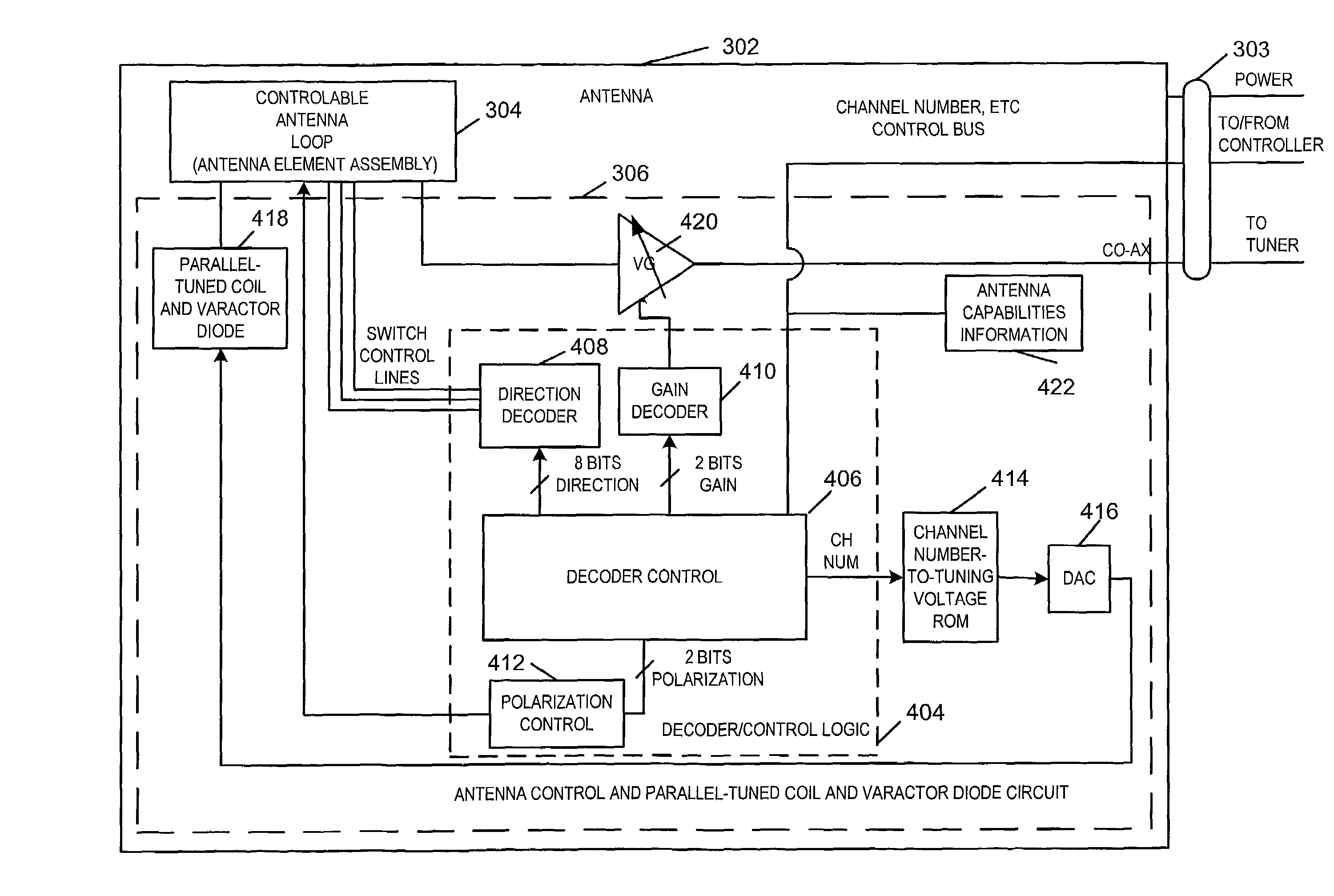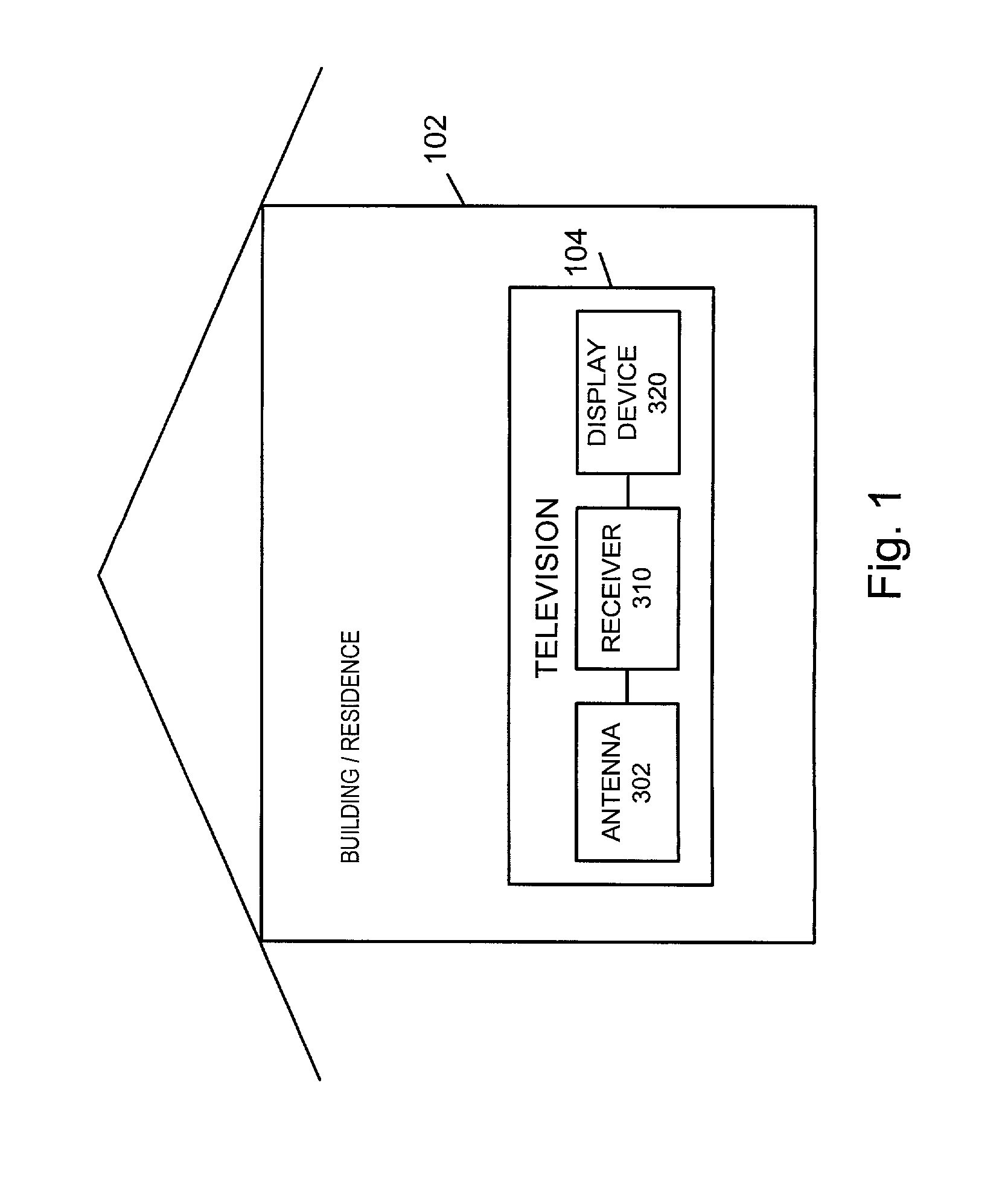Steerable antenna and receiver interface for terrestrial broadcast
a receiver interface and terrestrial broadcast technology, applied in the field of terrestrial broadcast receiver interfaces and receiver interfaces, can solve problems such as reference failure to address multi-path interference, significant multi-path interference, and signal reception under strong multi-path conditions. achieve the effect of reducing multi-path interference, improving signal-to-noise ratio, and facilitating the reception of dtv signals
- Summary
- Abstract
- Description
- Claims
- Application Information
AI Technical Summary
Benefits of technology
Problems solved by technology
Method used
Image
Examples
Embodiment Construction
[0033]As discussed above, the present invention is directed to methods and apparatus for implementing, using, and controlling steerable antennas.
[0034]While not limited to indoor applications, the methods and apparatus of the present invention are particularly well suited for implementing indoor receivers, such as television sets, which use indoor antennas.
[0035]FIG. 1 illustrates a television receiver 104 implemented in accordance with the present invention. The television 104 includes an antenna 302, a receiver 310 and a display device 320 which are coupled together as shown in FIG. 1. The television 104 is an indoor device as indicated by its location inside a building 102. The building 102, may be e.g., a residence such as a home or apartment. FIG. 9 illustrates how an exemplary television 104, incorporating the features of the present invention, might appear when viewed from the front of the television.
[0036]As will be discussed in detail below, the antenna 302 receives and sup...
PUM
 Login to View More
Login to View More Abstract
Description
Claims
Application Information
 Login to View More
Login to View More - R&D
- Intellectual Property
- Life Sciences
- Materials
- Tech Scout
- Unparalleled Data Quality
- Higher Quality Content
- 60% Fewer Hallucinations
Browse by: Latest US Patents, China's latest patents, Technical Efficacy Thesaurus, Application Domain, Technology Topic, Popular Technical Reports.
© 2025 PatSnap. All rights reserved.Legal|Privacy policy|Modern Slavery Act Transparency Statement|Sitemap|About US| Contact US: help@patsnap.com



